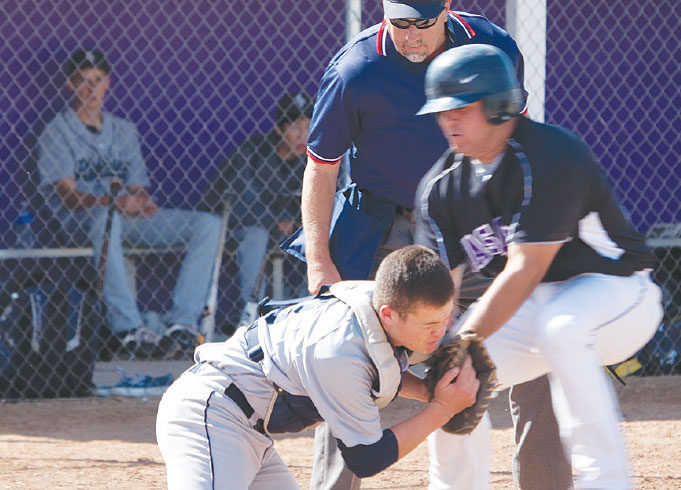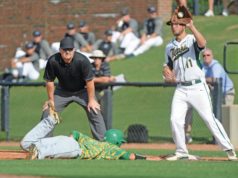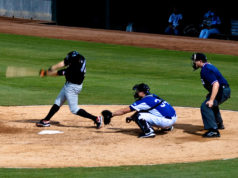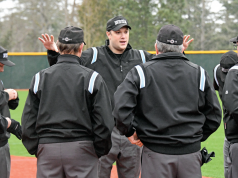An area that has received a lot of attention in recent years from rules committees at various levels of baseball involves malicious collisions between a baserunner and the catcher at home plate.
This attention is a noble attempt to place the safety of the players above any concern for maintaining time-honored traditions for how collisions at the plate should be handled.
Many baseball purists believe that the collision at the plate on a close play is just part of the game. However, as the game of baseball evolves, it’s hard to argue with efforts to make the game better and safer for the players.
However positive such rules regarding malicious contact are, they do place a great deal of pressure on umpires. It‘s up to us to make the distinctions necessary in deciding whether a collision is just a hard-nosed and unavoidable baseball play or something that can and should be avoided.
It’s no longer enough to get into great position to see and judge safe or out on a close play at the plate. Now, in an attempt to emphasize safety, there are a myriad of other concerns for the plate umpire to consider on such plays.
When hard contact occurs, it’s necessary to read the intent of the runner when he collides with the catcher. Was the runner making a legitimate attempt to reach the plate when the collision occurred, or was he trying to dislodge the ball from the catcher’s possession? Was it possible for him to avoid contact with the catcher and still reach home plate? NFHS and NCAA rules both place primary responsibility on the baserunner to avoid contact in these situations. Even pro rules now address the responsibility of the runner to avoid collisions at the plate. Gone are the days where a collision, like the famous one between Pete Rose and Ray Fosse in the 1970 All-Star Game, is condoned.
Clues to the intent of the runner can be gleaned from his body posture as he nears the moment of the crash. If he has lowered his shoulder or is leading with extended arms at the upper part of the catcher’s body, you can conclude his intent is to dislodge the ball, as opposed to a legal attempt to reach the plate. In order to make such judgment, it is necessary to see the runner before the contact occurs. As you move into position to take the play at the plate, it is important to glance at the runner as he is making his approach to the plate area. This is why, in most circumstances, going to the third-base line extended will give you the best view of the impending play. From that position you’ll be able to see all the elements of the play with minimal movement of your head.
If the catcher is in possession of the ball (or, under NCAA and pro rules, in the act of receiving a throw) at the moment of the crash, he is protected from any obstruction penalty. In this circumstance, the runner has three options. He can attempt to avoid the tag by veering past the catcher and avoiding contact, he can make a legal slide in an attempt to reach the plate, or he can give himself up. If the catcher isn’t in possession (or in the act of receiving a throw, in NCAA and pro), he is liable to be called for obstruction.
It is possible to have a crash between the runner attempting to score and the catcher at the plate without a penalty being applied to either player. Sometimes the ball will arrive at about the exact instant that the runner does. If the runner is making a legitimate attempt to score and has no path to the plate other than through the body of the catcher, you may have impact that looks rather awkward. That doesn’t necessarily mean that malicious contact has occurred.
It’s important to note that at the high school level, even an obstruction violation by the catcher will be ignored if malicious contact by the runner occurs. No runner will be awarded home by reason of obstruction if the runner is guilty of malicious contact. Malicious contact supersedes obstruction. College umpires may score the run due to obstruction and eject the runner for violation of the collision rule.
At the high school level, defensive and offensive players are specifically forbidden from malicious contact. This creates the possibility of penalizing the defense if the catcher uses undue force while applying a tag in a collision on a defenseless runner who is trying to score. No such mention is made in the NCAA or OBR rulebooks.
While the vast majority of collisions occur on plays at the plate, it is important to note that this rule applies to plays at all bases. A sliding baserunner whose spikes are coming into the base at or above the knee level of the fielder is guilty of malicious contact. A roll block by such a runner would also earn him an early exit from the remainder of the contest.
As soon as a collision has occurred, the plate umpire needs to be prepared to do more than simply make a ruling on the play. This is usually a pretty volatile situation that can lead to heated feelings on both of the players involved and their teammates. Consequently, a very strong and emphatic ruling from the calling umpire is necessary. If an ejection is going to result, it should be made so it is clear for all to see. The calling umpire needs to be prepared to possibly step in between the catcher and the runner immediately after the crash to forestall a fight breaking out.
If bad blood between the two teams has manifested itself in some way earlier in the game, umpires need to be keen to the possibility that a crash at home plate may be more likely on a close play at the plate. Awareness of such ill will might help umpires be better prepared for the possibility of an intentional cheap shot by the runner on the catcher as he scores.
Make sure you are prepared for more than just a safe or out call when a close play at the plate develops. Proper preparation and awareness of the responsibilities of both the catcher and runner will allow you to get it right when a crash occurs.
What's Your Call? Leave a Comment:
Note: This article is archival in nature. Rules, interpretations, mechanics, philosophies and other information may or may not be correct for the current year.
This article is the copyright of ©Referee Enterprises, Inc., and may not be republished in whole or in part online, in print or in any capacity without expressed written permission from Referee. The article is made available for educational use by individuals.


















